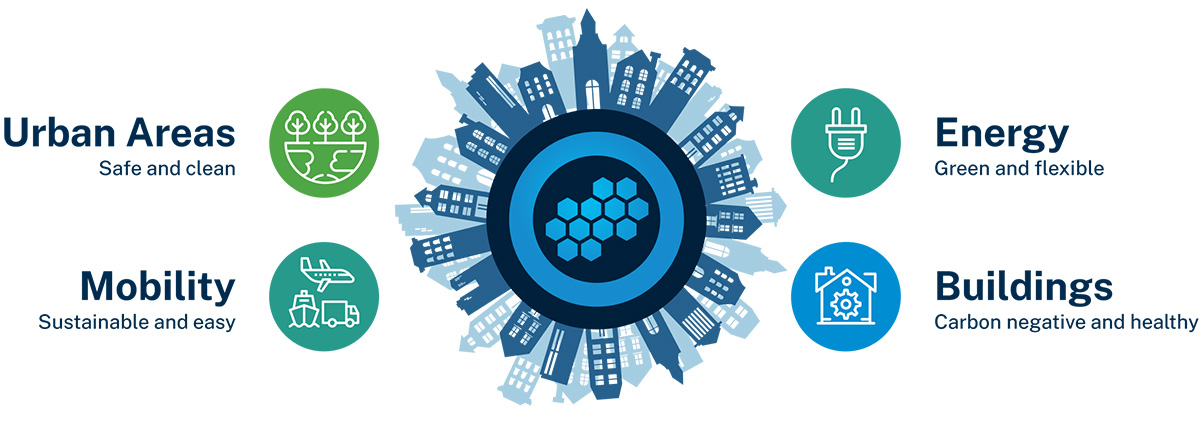When traffic volumes in a city are monitored, data accumulates. Making sure the the data is up-to-date, accurate and sufficiently diverse, is a demanding task. The City of Tampere solved data quality and cost challenges with a machine vision solution based on Wapice’s IoT-TICKET® -platform and artificial intelligence.

Image: Visit Tampere / Laura Vanzo
Tampere, a fast-growing city, faced a challenge in traffic planning. Pedestrian traffic volumes were measured with less than ten fixed traffic counters, and the rest of the required calculations were largely done by human resources, using sample counts. The technology used in traffic counting is constantly evolving. The city had piloted several solutions, but investing in them had not been seen as sufficiently profitable in terms of benefits and costs. The situation had been the same for years.
Wapice provides IoT platform as-a-service for City of Tampere and the city decided to use it to test Smart Mobility Insights, an AI-based traffic counting system by Wapice. “We had tested AI-based solutions before, but they had image recognition built in the camera itself and implementing the solution would have required the purchase and installation of new special cameras. In Wapice’s solution, image recognition is performed centrally using so-called edge computing, allowing us to make use of existing cameras and communication infrastructure. So basically we would buy an analytics application and server capacity, not cameras. For this reason, Wapice’s solution turned out to be considerably more affordable than fixed counters and previous image recognition solutions,” says Jarno Hietanen, traffic planning engineer in the City of Tampere.

Dashboard view of the Smart Mobility Insights solution.
Wapice’s system also had a big extra advantage: the ability to learn as the world changes. Unlike traditional systems, artificial intelligence can always be taught to count new types of objects. “Another added benefit is that we can use the same system to collect data on practically all different modes of transport. Initially, we looked at pedestrian and cycling data, and then quickly expanded to include electric scooters and car traffic. The data types are much more diverse than what is available from traditional traffic calculators,” Hietanen continues.
Cost savings and streamlining through real-time information
Wapice’s system is also flexible in terms of data sources which can be combined in a variety of ways. “The plan is to integrate the system with traffic counting data from traffic light systems and a solution for dynamic street lighting control. Traffic-based lighting control can, for example, improve traffic safety and save energy during off-peak hours,” Hietanen explains.
The real-time system also allows a rapid response to specific traffic situations, such as major events. A quiet street can suddenly be full of people at the end of a sporting event or the start of a concert. In such cases, dynamic lighting control automatically adapts to the situation at hand.
“The big benefits come when you start to analyse the data in depth. From the data you can see, for example, trends and seasonal variations in traffic safety and predict the development of traffic volumes by region. For near misses, we can see the times and places where the risk rises and identify the situations that set off chains of events,” says Mickey Shroff, Head of AI, Analytics and Automation Solutions at Wapice.
Services and safety, provided on location
“The interfaces of the IoT platform enable the use of anonymised, numerical data in a wide range of applications in the urban ecosystem for companies, research institutes and universities. Machine vision is a cost-effective way to observe the urban environment in many ways. For example, it is possible to identify traffic, security, parking, outdoor space occupancy and weather conditions with a single sensor,” comments Jari Kuusisto, Wapice’s Product Manager, IoT for Smart Cities.
Without data, the perception of traffic volumes is distorted
As we are all part of the city traffic, we all have an opinion about it. This is precisely why a fact-based view of the situation is so important.
“You regularly hear claims in the traditional and social media that there is no longer any traffic on Hämeenkatu. After the introduction of the image recognition counter, we now know with certainty that in July 2022, for example, more than one million pedestrian, cycling and electric scooter trips were made over the Hämeensilta bridge. Wapice’s solution provides us with significant additional information for our decision-making,” Hietanen emphasises.

Image of the article: ©Visit Tampere / Laura Vanzo
Additional Information

WAPICE LTD.
Jari Kuusisto
Product Manager, IoT for Smart Cities
+358 44 5533512
jari.kuusisto@wapice.com
CITY OF TAMPERE
Jarno Hietanen



